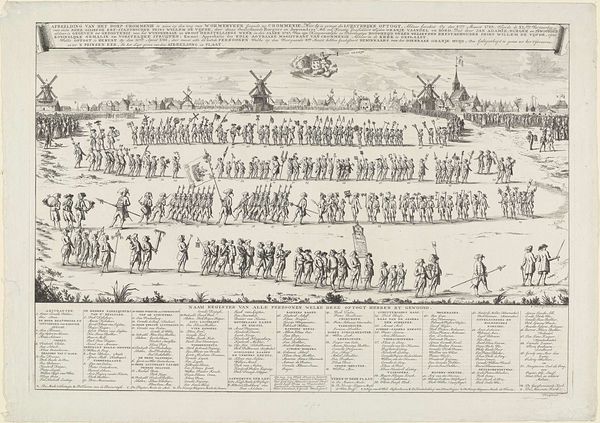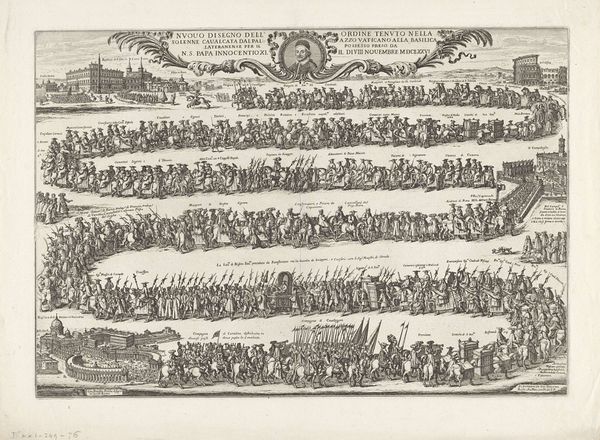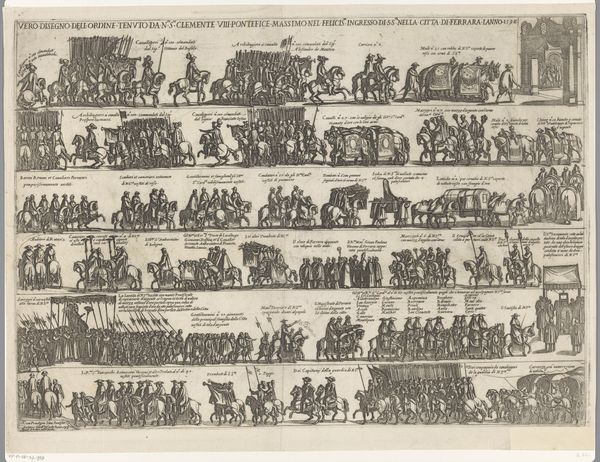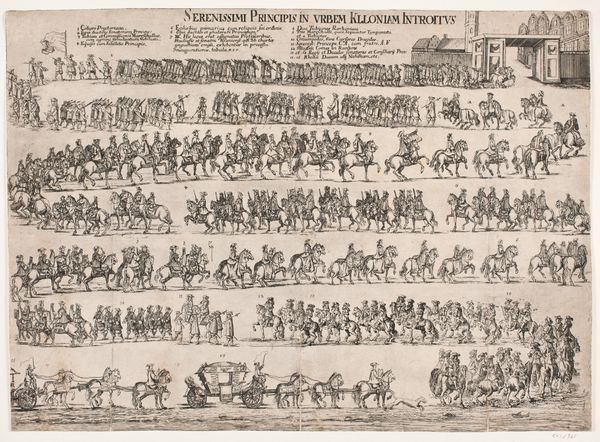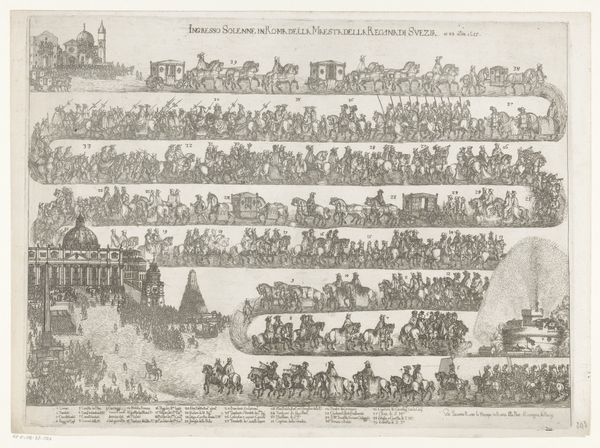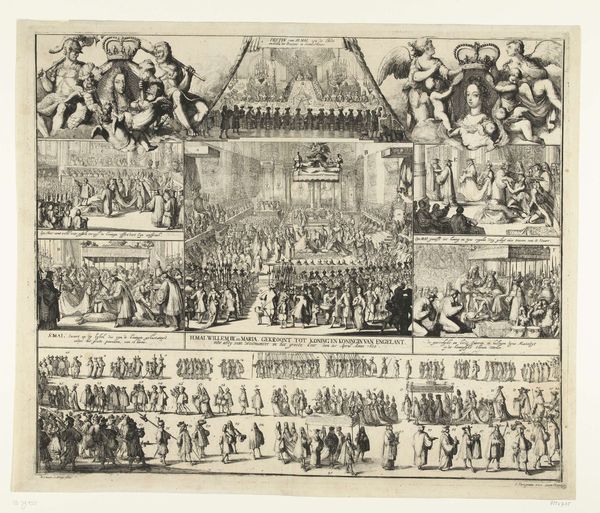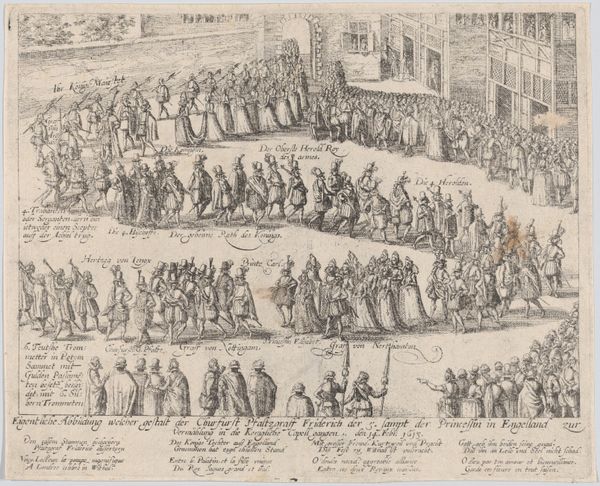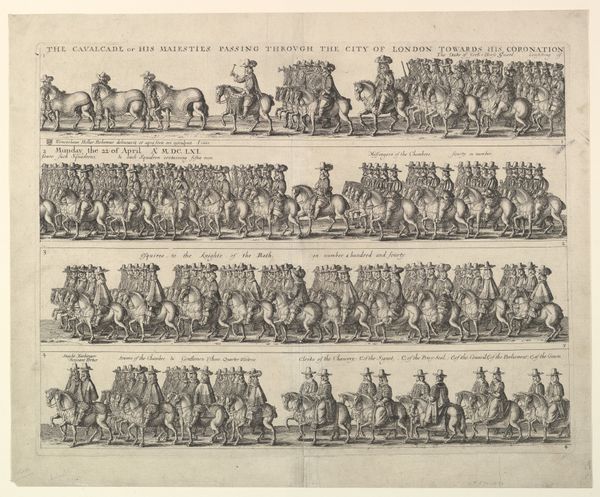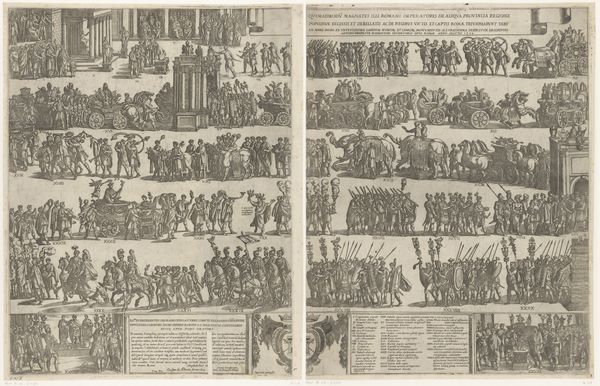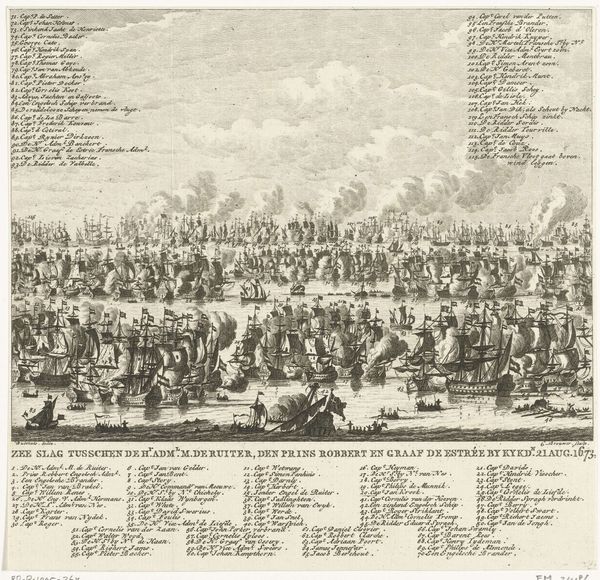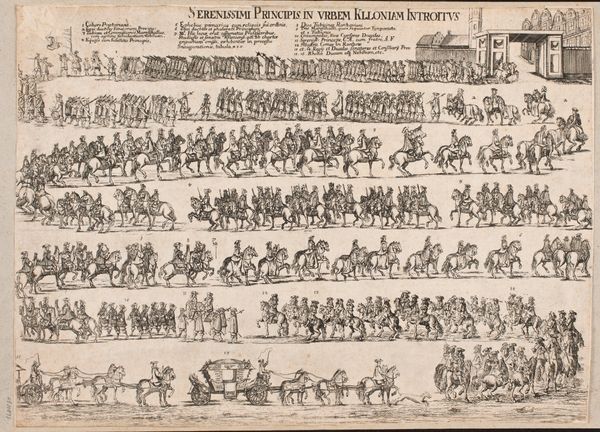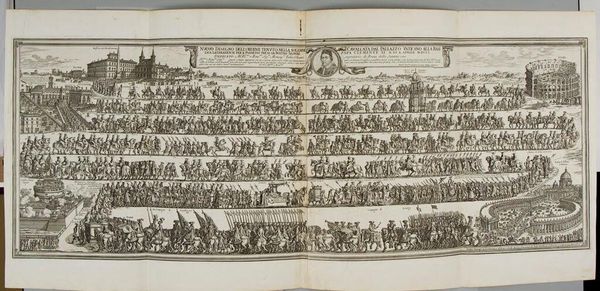
print, engraving
#
baroque
# print
#
ink line art
#
linework heavy
#
cityscape
#
history-painting
#
italian-renaissance
#
engraving
Dimensions: height 411 mm, width 521 mm
Copyright: Rijks Museum: Open Domain
This print, made by Giovanni Battista Falda in 1671, depicts the grand entrance of Pedro Antonio de Aragón into Rome. The technique here is etching, a printmaking process where lines are incised into a metal plate, often copper. These lines hold ink, which is then transferred to paper under great pressure. Falda has used this process to its full capacity. Notice the meticulous detail of the figures, horses, and architectural elements. The linear quality and tonal range of the print directly result from the controlled corrosion of the metal plate. Think about the labor involved: from the initial design to the skilled execution of the etching, and the final printing process. The work captures the pageantry of the event, but also reflects the complex social hierarchy of the time, the power of the ruling classes, and the sheer amount of human effort required to produce and celebrate such occasions. This print is not just a representation of an event, it's a document of labor and social order.
Comments
No comments
Be the first to comment and join the conversation on the ultimate creative platform.
